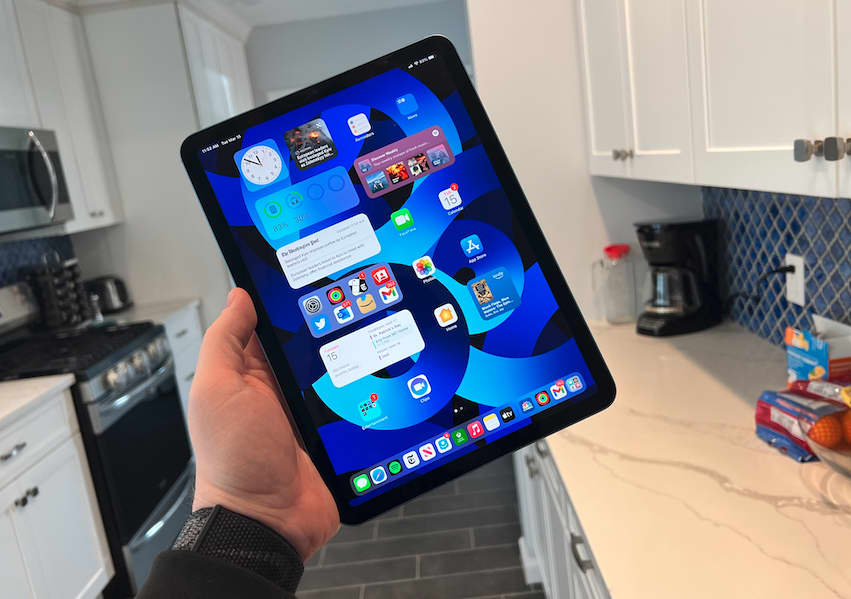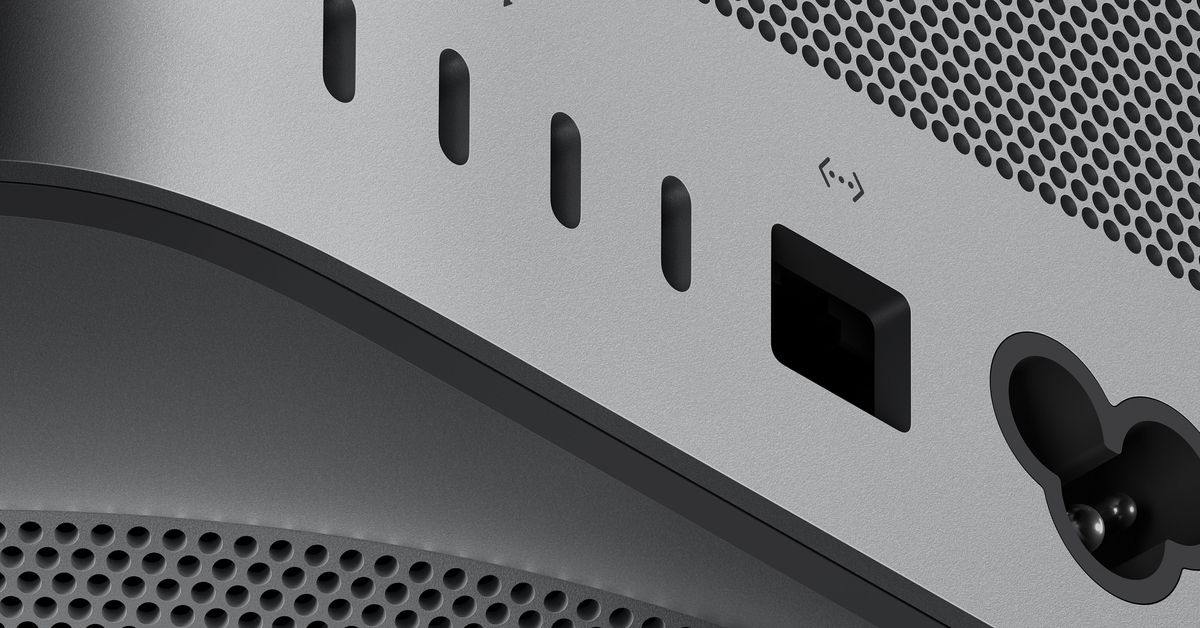Amazon Echo Pop review: more style, less substance
As the latest entry-level Alexa smart speaker, the $40 Echo Pop packs a lot of value into a small package. It’s not as good as the Echo Dot, but it’s got looks on its side. Continue reading…
/cdn.vox-cdn.com/uploads/chorus_asset/file/24691054/236685_Amazon_Echo_Pop_JTuohy_0001.jpg)
When I first saw the $39.99 Echo Pop — Amazon’s latest Alexa-powered smart speaker — the word “jaunty” popped into my mind. It looks fun, cute, and kind of happy. After testing it for a few days, its looks are the main reason I’d buy one of these over the $49.99 fifth-gen Dot. There aren’t any new features; in fact, it loses a few for that $10 price cut. It also doesn’t hear as well or sound as good as the Dot.
But if you want a smart speaker to listen to podcasts, control smart home devices, and answer the occasional math question in smaller rooms like a bathroom, laundry room, or guest room, then the Pop, with its smaller size, better color options, and lower price, will fit in fine. For bigger rooms in your house, the Echo Dot can do more and sounds better for only $10 extra.
The Echo Pop is a semi-circular smart speaker with three physical buttons (volume up and down and mute) and a barrel plug with a long white power cord attached to a 15-watt power brick. (Amazon has yet to adopt USB-C for power on any of its Echo smart speakers.)
It has Amazon’s Alexa voice assistant baked in and can do all that brings with it — stream music, set multiple timers, trigger Alexa Routines, control connected smart home devices, play silly games, and tell even sillier jokes. It also works as a home intercom and telephone.
The Pop has all the same smart home radios as the Dot but lacks some of its more advanced sensors
The Pop is also only the second speaker to get Amazon’s AZ2 Neural Edge processor, which allows for more local processing of voice commands, making requests like “What time is it?” and “Turn off the lights” faster than non-AZ2 Echos. (The newest Echo Dots and the Echo Show 15 smart display also have it).
1/3
The Pop comes in two new colors — purple and teal.
The Echo Pop is the cheapest Echo speaker, with a list price of $40. As with all Echo speakers, it’s likely to see major price cuts as part of Amazon’s play to get its smart voice assistant into every room of your house. But remember, with inexpensive hardware comes many attempts to sell you stuff. While testing the Pop, I set an alarm that offered to upsell me on a louder alarm sound.
Setting an alarm came with an upsell for a louder alarm sound
The Echo Pop in teal.
But, if you use Alexa, you know this, and if you’re good with it, then you probably want Alexa and its more useful, less intrusive features in every room (for more on these features, check out my Echo Dot with Clock review).
While only slightly smaller than the Echo Dot, the Pop’s flat face fits in better on a bookshelf or table. The addition of teal and purple color options, along with black and white, adds to that jaunty factor making it feel more like a design choice and less like a piece of tech in a room. And it’s much nicer looking than the hideous Echo Flex, Amazon’s previous attempt at a budget speaker to get Alexa into every room.
While the Pop has all the same smart home radios as the Dot — it’s an extender for an Eero mesh Wi-Fi system, a Matter Controller, and a Sidewalk bridge, it lacks some of the Dot’s more advanced sensors. There’s no temperature sensor or ultrasound motion detector, and the accelerometer that powers the tap-to-snooze feature only works for alarms, not for pausing and resuming music as the Dot can. I also accidentally discovered you can’t snooze or dismiss an alarm by tap or voice if the internet is out, so that will be a pull-the-plug moment.
The Echo Pop (left, in teal) and the Echo Dot with Clock. The Pop has a more subtle look overall than the Dot (even without the LED clock).
Echo Pop vs. Echo Dot
The biggest question, though, is if you’re looking to get a cheap Echo smart speaker, should you get the Pop or the Dot? Here’s a look at how the two stack up.
Sound: The Echo Pop is fine for listening to a podcast or the radio and acceptable for listening to music if you’re in a small room and sitting right next to it. It’s noticeably better when stereo paired with another Pop. But this is not a device to buy for banging tunes. While the Dot isn’t, either, and actually has a smaller front-firing speaker, it has a richer sound and better bass, so if that’s a consideration — spend the extra $10. Plus, with a Dot, you can tap it to pause music quickly. With the Pop, you have to use a voice command.
If you already have a better Alexa speaker and / or a decent Bluetooth speaker, you can pair the Pop to either of those and save the $10. But neither the Pop nor the Dot has a 3.5mm audio jack. If you want to add voice control to a dumb speaker using a wire, the third-gen Dot was your cheapest option. But Amazon has discontinued that model, so if you need that feature and can find one, grab it. (The $100 fourth-gen Echo also has an audio jack).
Speed and performance: The Pop and the Dot have the same AZ2 Neural Edge processor, so execute most commands faster than older Echos. But the Dot responded marginally faster in side-by-side testing because it has four microphones, while the Pop only has three, so it picked my voice up better from farther away. If you’re putting a Pop on your desk or bedside table, though, you won’t notice the difference.
Sensors: The lack of a temperature and ultrasound sensor makes the Pop less useful as a smart home controller. With the fifth-gen Echo Dot, you can use its temperature sensor to do things such as adjust your smart thermostat when a room gets too warm or have its ultrasound sensor turn lights on when you walk in. Both the Pop and the Dot can trigger Alexa Routines based on sound detection, such as a dog barking, water running, or someone snoring.
I may have a penchant for purple tech products, and the Pop fit right in.
Size and shape: As mentioned, I prefer the Pop’s look to the Dot’s. While it’s only slightly smaller (3.9” x 3.3” x 3.6” compared to 3.9” x 3.9” x 3.5” ), the design fits better on a desk or bedside table. I am a big fan of the new purple color, too, but I’ve always had a penchant for purple products. The teal is a bit muddy looking, more gray than green, but also more discreet than any of the other Dot colors.
What the Pop? Oddly, the Pop doesn’t have the Action button, which almost every other Echo does. This lets you call Alexa without saying its name. I actually use it a lot and missed it here. The only other Echo without it is the Echo Spot, which this device heavily resembles in form factor (although there’s no screen or camera).
There is also no option for a clock display with the Pop. My favorite Dot is the Echo Dot with Clock, which uses a dot matrix display to show the time and a few other bits of useful info. That’s not an option here, although Amazon did relocate the Alexa LED light from the bottom, where it is in the Dot, to the top, where it appears as a small strip (you can adjust its brightness in the Alexa app).
Smart Home Data Privacy: Echo Pop
Bringing connected devices into your home also brings with it concerns about how the data they collect is protected. The Verge asks each company whose smart home products we review about safeguards it has in place for your data.
The primary data collected by the Echo Pop are voice and smart home device interactions with Alexa. The speaker’s microphones are always listening for the wake word or trigger sounds unless you mute the device using the physical mute button or by telling Alexa to mute. Once it hears the word, then it starts analyzing what you say.
All voice interactions are encrypted in transit to the cloud and throughout the cloud verification process. Voice recordings and transcripts from requests are securely stored in Amazon’s cloud. You can review and choose to delete this information at any time through the app or Amazon’s Alexa Privacy Hub. You can also opt out of allowing Amazon to use your recordings to improve Alexa.
The Echo Pop’s Alexa light is on top, making it easier to see and less dominant in a dark room than the larger light ring on the Echo Dot.
Should you buy it?
If you are already deep into an Alexa-powered smart home, the Pop makes sense for the one or two rooms where you can’t justify spending $50 on another speaker (or couldn’t wait for one of Amazon’s frequent sales).
It’s also a good upgrade for any aging early-gen Echos you still have, anything older than the third-gen that came out in 2018. It’s worth upgrading from the third-gen, too, if you don’t need that 3.5mm jack, as the Pop is faster, sounds better, and looks way nicer. I wouldn’t replace a fourth- or fifth-gen Dot with a Pop, though, as you lose features.
The Echo (4th Gen) is still my top recommendation for an Echo speaker.
If you’re new to Amazon Alexa, get the Pop if you want to try out this smart speaker malarkey — $40 is a steal for a piece of tech that can do everything the Pop can. Also, consider this if you want to start adding smart devices to your home and are intrigued by the new Matter smart home standard. This is the cheapest Matter controller you can buy — although it’s Wi-Fi only, so it won’t work with all Matter devices. For full Matter compatibility, you’d need to bump up to one that adds support for the Thread protocol, such as the larger Echo (4th Gen).
The Echo (4th Gen) is still my top recommendation for an Echo speaker, and it’s been on sale for as low as $50. If it’s a choice between a fourth-gen Echo and an Echo Pop — there’s no contest. While the Echo (4th Gen) still doesn’t have Amazon’s latest processor, it is an excellent smart speaker and a more useful smart home hub. It does everything the Dot can, plus adds Zigbee compatibility as well as Thread, and it sounds really good.
AGREE TO CONTINUE: AMAZON ECHO POP
Every smart device now requires you to agree to a series of terms and conditions before you can use it — contracts that no one actually reads. It’s impossible for us to read and analyze every single one of these agreements. But we’re going to start counting exactly how many times you have to hit “agree” to use devices when we review them since these are agreements most people don’t read and definitely can’t negotiate.
In order to use the Amazon Echo Pop, you’ll need to download the Alexa app for iOS or Android. An Amazon account is required to sign in. By signing up for one of those, you must agree to its conditions of use.
When you set up the device in the app, “you agree to Amazon’s conditions of use and all of the terms found here.” You can explore the documentation at that link, but below, we’ve listed the 12 terms that you must agree to:
Final tally: 13 mandatory agreements.
Photos by Jennifer Pattison Tuohy / The Verge

 MikeTyes
MikeTyes 
































.jpeg?trim=0,89,0,88&width=1200&height=800&crop=1200:800)